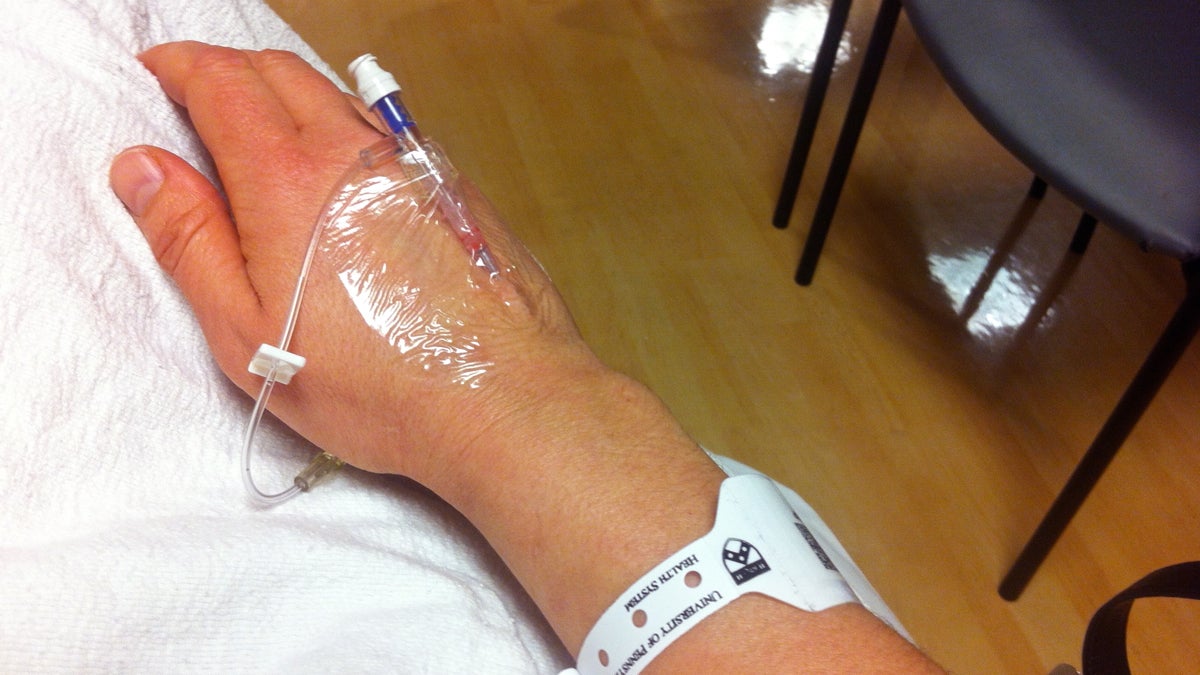Want to know what happened during your surgery? Apparently, there’s a note for that.
Listen
Why don't we get notes that tell us what happened during a surgery? Turns out those notes exist
What exactly happened as your body lay on the operating table, and you were in a death-like slumber?
The moments before surgery, from the patient’s perspective, are a strange in-between space, part nervousness, part letting go.
You’re still awake, hooked up to machines, with masked doctors and surgeons swarming around you. You know that in just a few moments, you’ll slip away. Deep breath, deep breath, and then you are out.
Right before a recent surgery to fix an umbilical hernia, I remember looking at the big bright light right above me, and waiting for the moment when I’d pass out. I missed the moment. I just was gone.
Zakiya Gibbons, a recent college graduate recalls counting backwards in the operating room. “I remember just cutting out mid-sentence in my own head, I was like ‘ten, nine, eigh…’ and then that was it.”
Seemingly moments later, you’re waking up, feeling groggy – and trying to find out what happened during that blank gap in your memory.
As I regained consciousness at the Perelman SurgiCentre, in a small area fenced off by curtains, I struggled to keep my eyes open. A nurse told me everything was okay. My throat was killing me, and I was chewing ice chips.
Fritz Graham of Philadelphia found this part of the experience somewhat disorienting. “One moment I’m joking with the nurses, the next thing I know, I was in the OR with a cast on my hand,” he said.
What exactly happened as your body lay on the operating table, and you were in a death-like slumber?
Surgery outcomes are typically communicated to family members – who may not be that great about relaying that information, or they share it with patients while they are still feeling the effects of their anesthesia.
“I had surgery on my foot,” said Zakiya Gibbons. It was a complicated procedure that involved a tendon transplant. “I guess the surgeon told my dad, ‘her foot looks like a baby’s foot now.’ My mom told me that and I thought, ‘what does this mean, did they shrink it?’ I wanted clearer answers.”
Sarah Tebbe felt unsure about her results and prognosis after a surgery to remove fibroids. She was sent home, and kept trying to reach her doctor once she got home.
“We got a call maybe at 6:30 and she said ‘are you okay,?” I said ‘yeah, what happened?'” The doctor asked Tebbe if she didn’t remember their previous conversation. “I said, ‘the one we had before the procedure?’ and she answered ‘I came in to see you when you were coming out of anesthesia.'”
I had the same experience as Tebbe following my surgery.
“I hope you remember that we had a brief discussion in the recovery area immediately after the surgery,” my surgeon, Jon Morris of the University of Pennsylvania, said as he greeted me during my post-op appointment, two weeks after my procedure. I didn’t. I don’t remember seeing him at all as I was waking up.
I asked him why patients don’t get a note after surgery that describes the details, perhaps titled “while you were out,” reminiscent of the office past.
Turns out there is such a thing, it’s called an operative summary. “It’s a dictated note that describes the technical components of the surgery,” Morris explained to me.
Morris says only about 20 percent of his patients ask for it – probably because most of us don’t know it exists. Morris said it’s not usually part of the digital medical record we can access online.
“It’s a fairly standard format,” said Morris. “It lists your name, the date of the procedure, the preoperative diagnosis, the post operative diagnosis,” he said. “We give a brief clinical history, the type of anesthesia we used, and the technical details of the surgery.” The document also describes complications, blood loss, and whether specimen were taken.
My operative summary included the size of the hernia, 6×4 centimeters, its location, and what type of mesh was used to fix it.
Morris said this note is important for patients and doctors. “I think for us, it is about documentation, it serves a purpose for billing, it’s part of the permanent medical record,” he explained. For patients, it’s something to hold onto for future procedures. “God forbid, if you have a recurrence, I can look back and see what was done.”
I also asked Morris about a strange bruise I had on my right thigh after my abdominal surgery.
“I’m going to say with 95 percent [certainty] it was Heparin, standard of care to prevent clots in the leg during anesthesia. You were not the first person to ask me this. I don’t routinely bring it up in our pre-operative discussion, but it’s a major patient safety initiative.”
This part was not in my operative summary – also absent was perhaps a more important fact: what happened to the mesh from a previous attempt to fix the same hernia.
WHYY is your source for fact-based, in-depth journalism and information. As a nonprofit organization, we rely on financial support from readers like you. Please give today.




